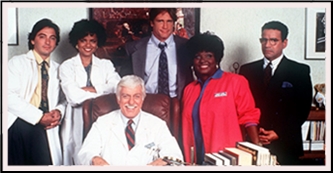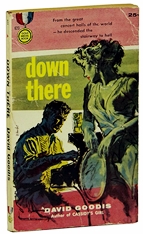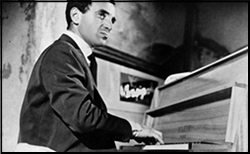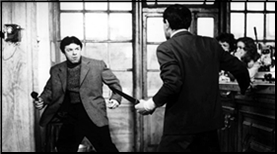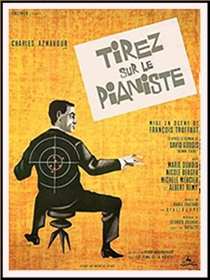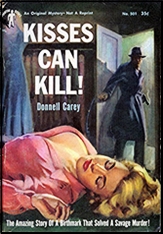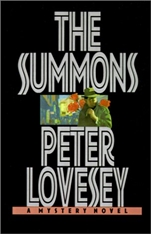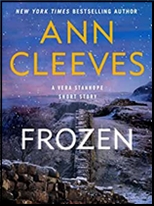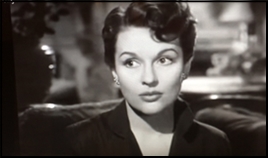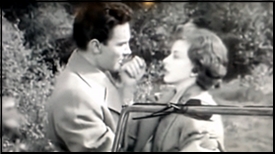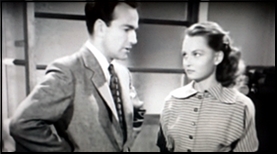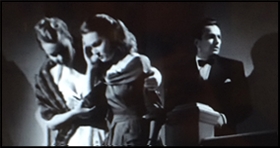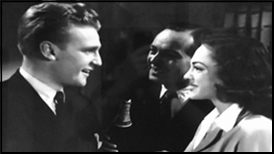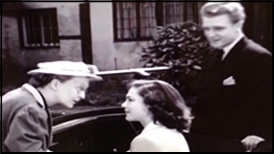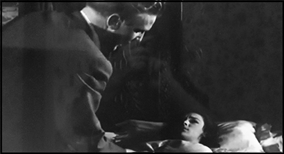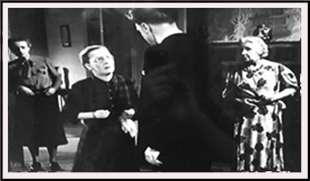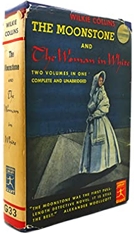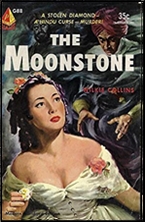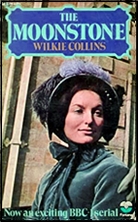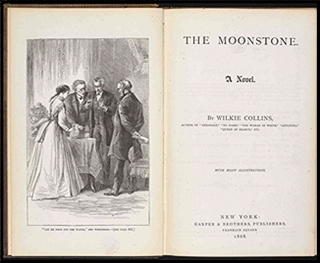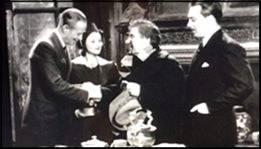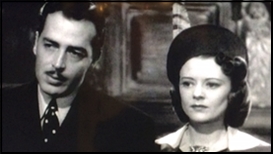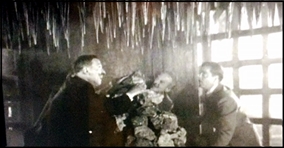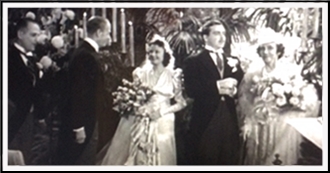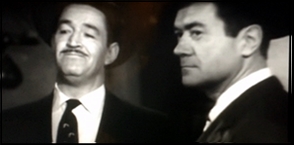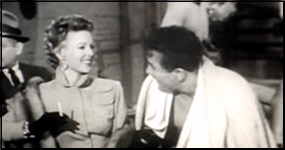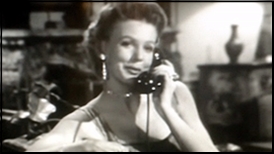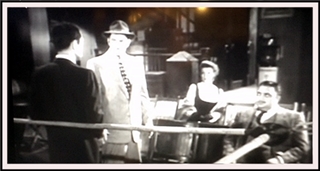Sun 28 Mar 2021
A TV Episode Review by David Friend: DIAGNOSIS MURDER “The Last Resort” (1998).
Posted by Steve under Reviews , TV mysteries[9] Comments
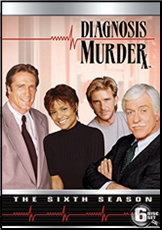
DIAGNOSIS MURDER. “The Last Resort.” CBS, original air-date: 19 November 1998 (Season 6, Episode 9). Dick Van Dyke (Dr. Mark Sloan), Victoria Rowell, Charlie Schlatter, Barry Van Dyke (Steve Sloan). Guest star: Joe Penny. Written by Paul Bishop. Director: Christian I. Nyby II. Series available on DVD. Not known to be currently streaming online.
I used to love Diagnosis Murder. When I was eleven and twelve years old, my mum would record (on VHS!) the daily afternoon repeat while I was busy enduring institutional betrayal at school. It may not have been the coolest television programme around, but it was light-hearted and often reasonably exciting, with a nifty mystery plot and maybe a bit of action too.
As I’m sure everybody here knows, the show revolved around ebullient sixty-something Dr Mark Sloan (Dick Van Dyke), the Chief of Internal Medicine at Community General Hospital in Los Angeles, who also doubles as an amateur sleuth and eventual consultant for the L.A.P.D., often working alongside his homicide detective son Steve (a permanently purse-lipped Barry Van Dyke, Dick’s real-life son).
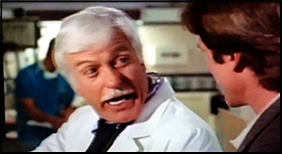
Assisting Mark are a couple of young, attractive medical colleagues, sensible and assertive Dr Amanda Bentley (Victoria Rowell) and boyishly enthusiastic Dr Jessie Travis (Charlie Schlatter), though all three are often hindered by the fussy, fulminating hospital administrator Norman Briggs (Michael Tucci), who believes they should remain focused on their patients instead of trying to solve crimes.
The series depended almost disproportionately on its star and the good-will he had accrued from his eponymous sitcom and triptych of big-screen musicals from the early-to-mid 1960s. Like Andy Griffith, that other wholesome ’60s comedy lead who turned to the less demanding mystery genre in old age, Van Dyke was able to carve out a niche, catering to a more mature audience and working as a sort of counter-programming to gritty police procedurals like NYPD Blue and Homicide: Life on the Street.
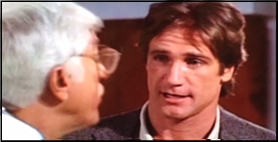
Stylistically, it was a less twee and ever so slightly more plausible Murder, She Wrote, without ever becoming a similarly solid ratings champion. Indeed, Diagnosis Murder sputtered every year into almost reluctant renewals by a higher-brass who knew how appealing the older demographic was to advertisers compared to the younger, more impecunious generations proceeding them.
Whereas many episodes had a minor, frivolous subplot to offset all the murder and petty revenge, there was a small shake-up in the sixth season when things occasionally became a little bit darker than regular viewers might ordinarily expect. “The Last Resort” was one such episode, and there’s nary a chuckle to be had in its forty-four minutes, beginning with Steve apparently losing his professional perspective and attacking a suspect during interrogation – even throwing a chair through the one-way glass.
The sudden meltdown, after five years of watching this wearily workmanlike detective harrumphing his way through a slew of homicide investigations, is surprising, particularly as we’re told that he was supposed to be a calming influence on his new partner Reggie.
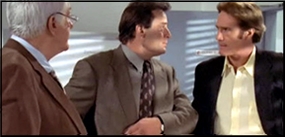
An abrasive, confrontational cop, Reggie Ackroyd (Joe Penny) is constantly on the brink of getting fired or even arrested himself, only justifying his erratic behavior with the dubious assertion that his wife and daughter were kidnapped by a criminal named Sykes. Things get even worse for the pair when Steve inadvertently kills an unarmed rapist and reluctantly allows Reggie to cover it up.
After further trouble, the men are strong-armed into attending a psychiatric rehabilitation program at Community General Hospital – a “Betty Ford clinic, except it’s for cops†– and struggle through sessions of group therapy led by the bluntly incisive Dr Sinclair (Reginald Val Johnson).
While Steve is weighed down by guilt of the cover-up, Reggie begins losing all sense of reality, the frustration and anger over his family’s supposed capture uncoiling into a series of vividly disturbing hallucinations.
Will he find them? Or is there something even more sinister going on?
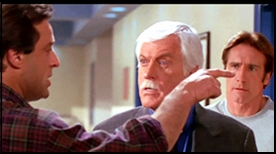
A dark story, with one of its biggest surprises being the absence of a breezy tag-scene which typically closes every episode, and the decision to let its grimly unsettling final fade-out stew in the viewer’s mind. Joe Penny, formerly of the now almost-forgotten Jake and the Fatman (a series which originated the Mark Sloan character in a one-episode guest turn, though Penny plays another role here), is excellent as the cold and mercurial Ackroyd, a man driven to insanity from rage, remorse and the pressures of a police career.
To my eyes, at least, he looks like Sylvester Stallone, with a similar, moodily masculine persona to match. Barry Van Dyke, meanwhile, is subtly effective, though mostly this is due to the unexpected novelty of a more personal plot-line for the character rather than a genuinely compelling performance.
Elsewhere in the episode, there’s a more conventional mystery sub-plot which keeps the other two regulars occupied as they investigate the locked room murder of a lab technician. For once, Jessie confront the culprit, and in a slyly charismatic manner too, demonstrating how a puppy-ish medical prodigy can lull any criminal into a false sense of security.
